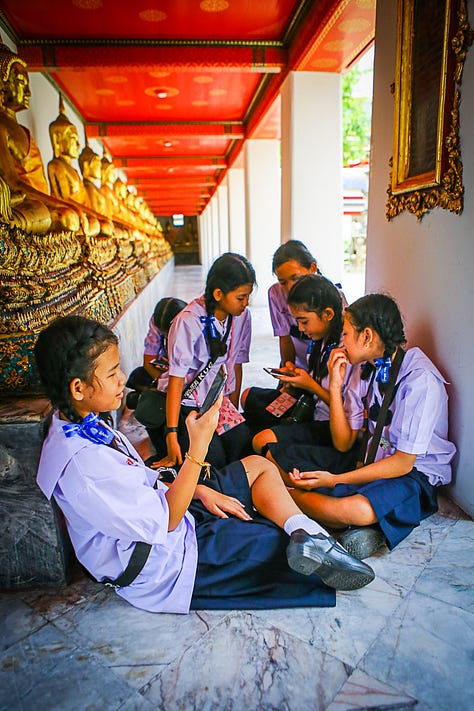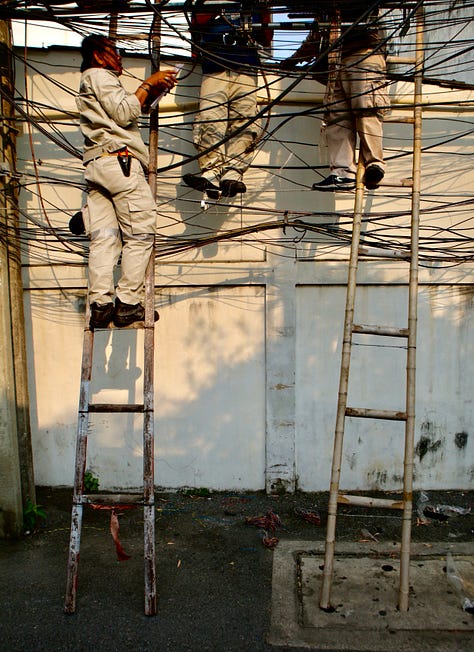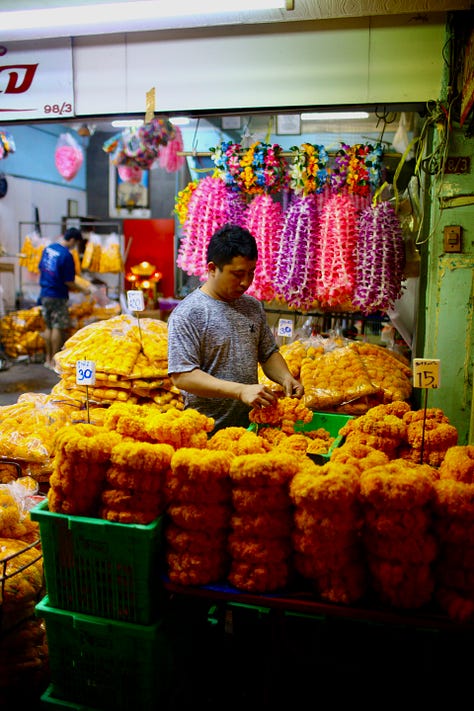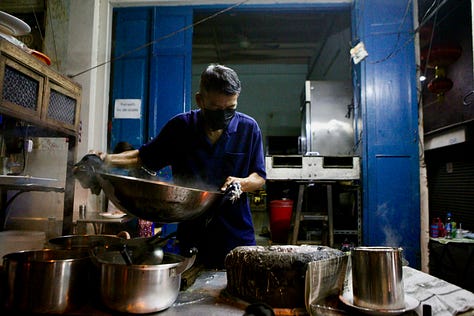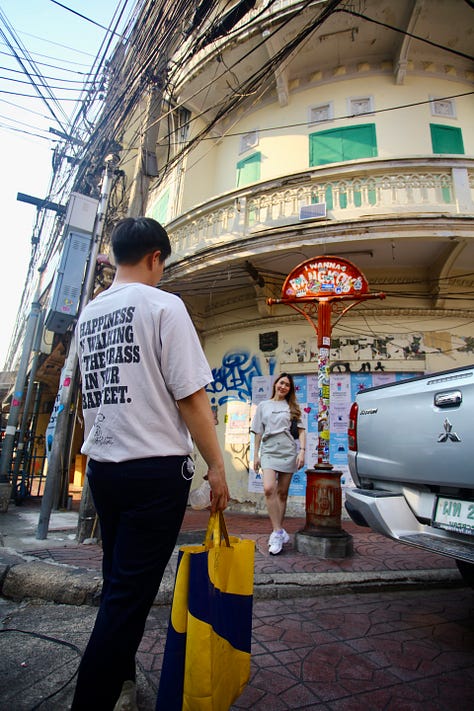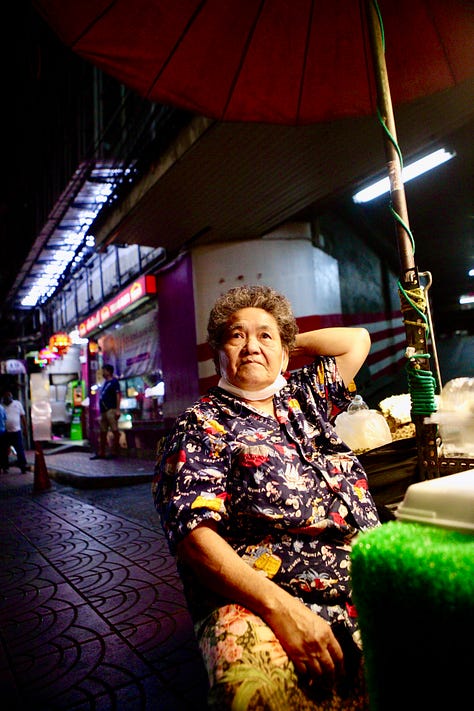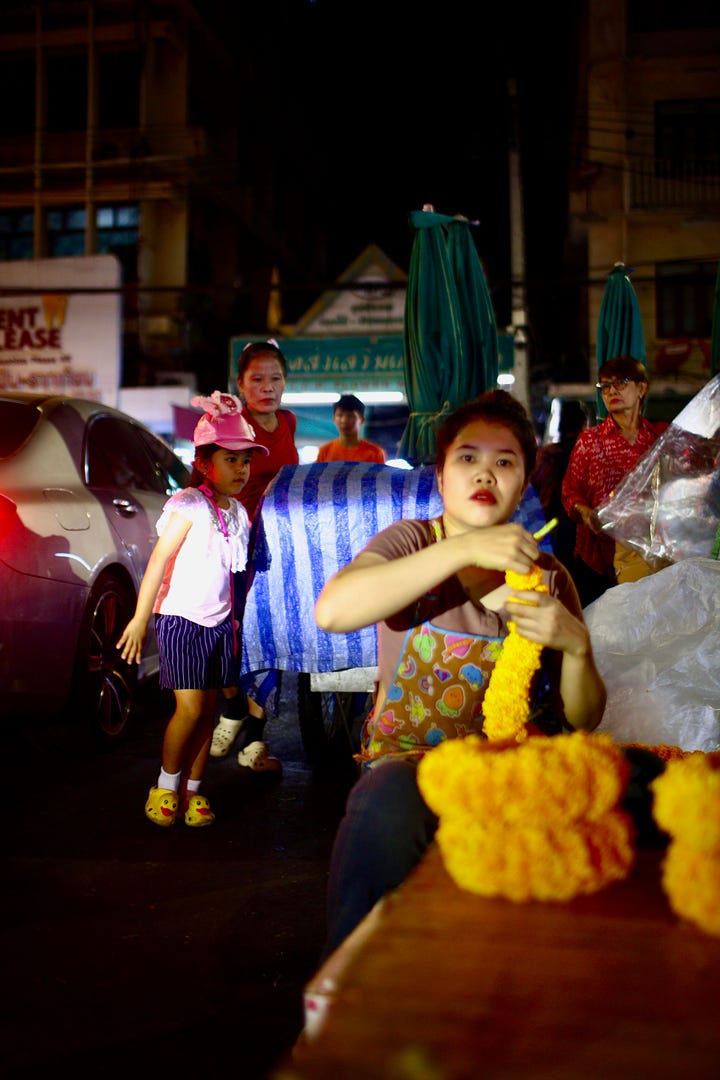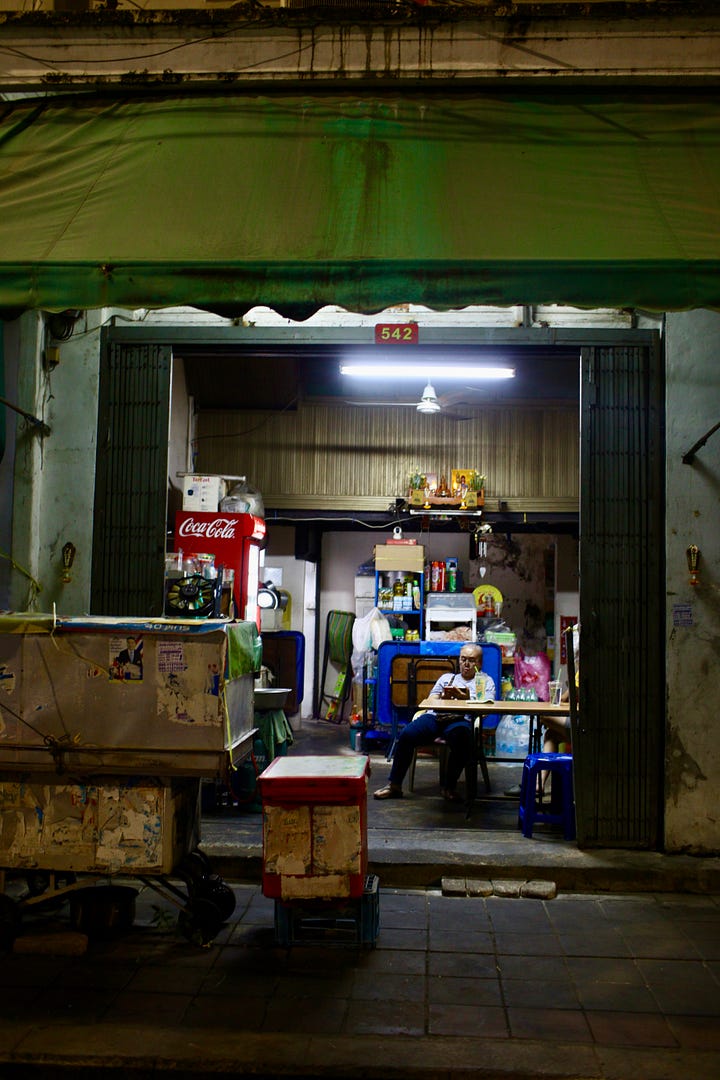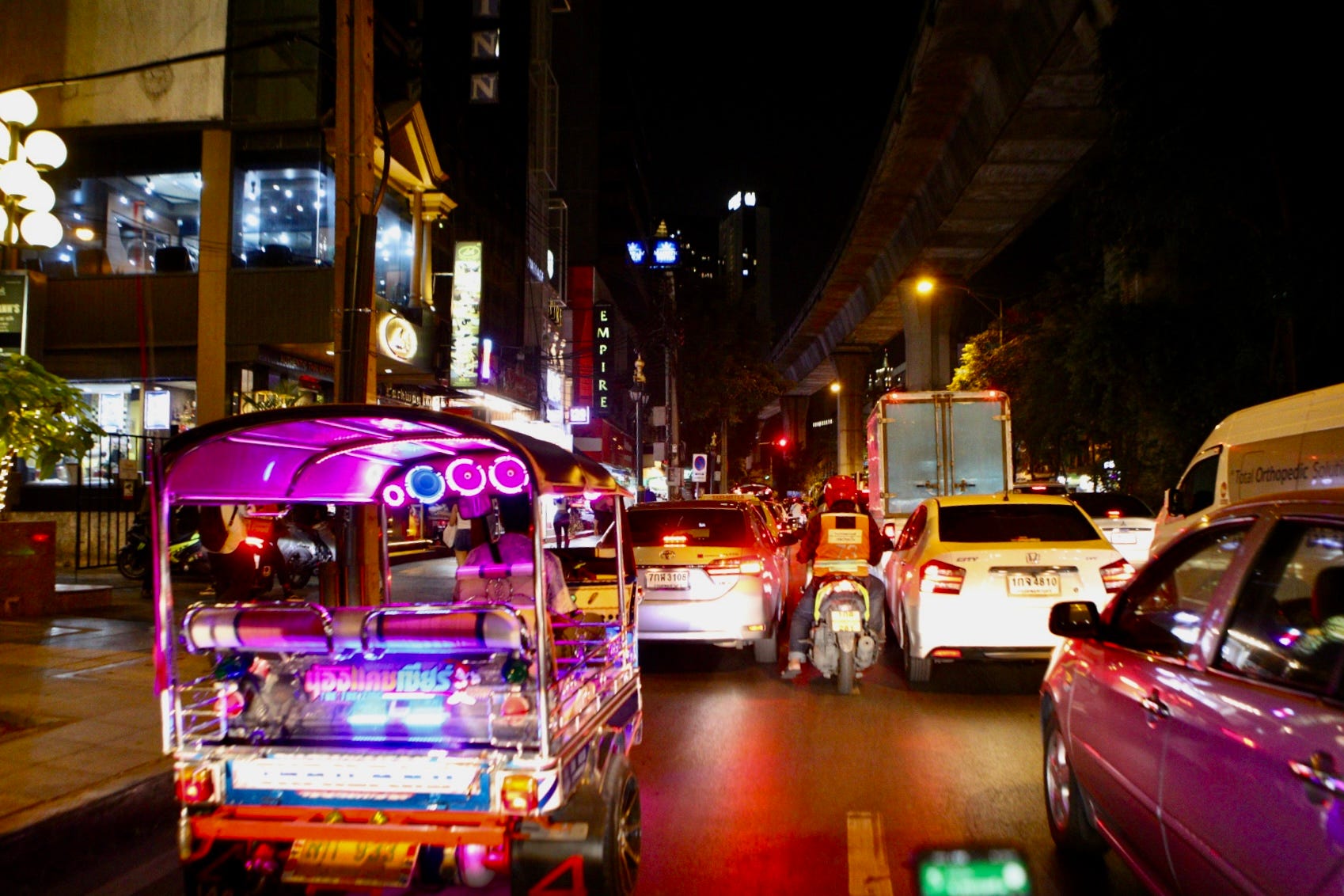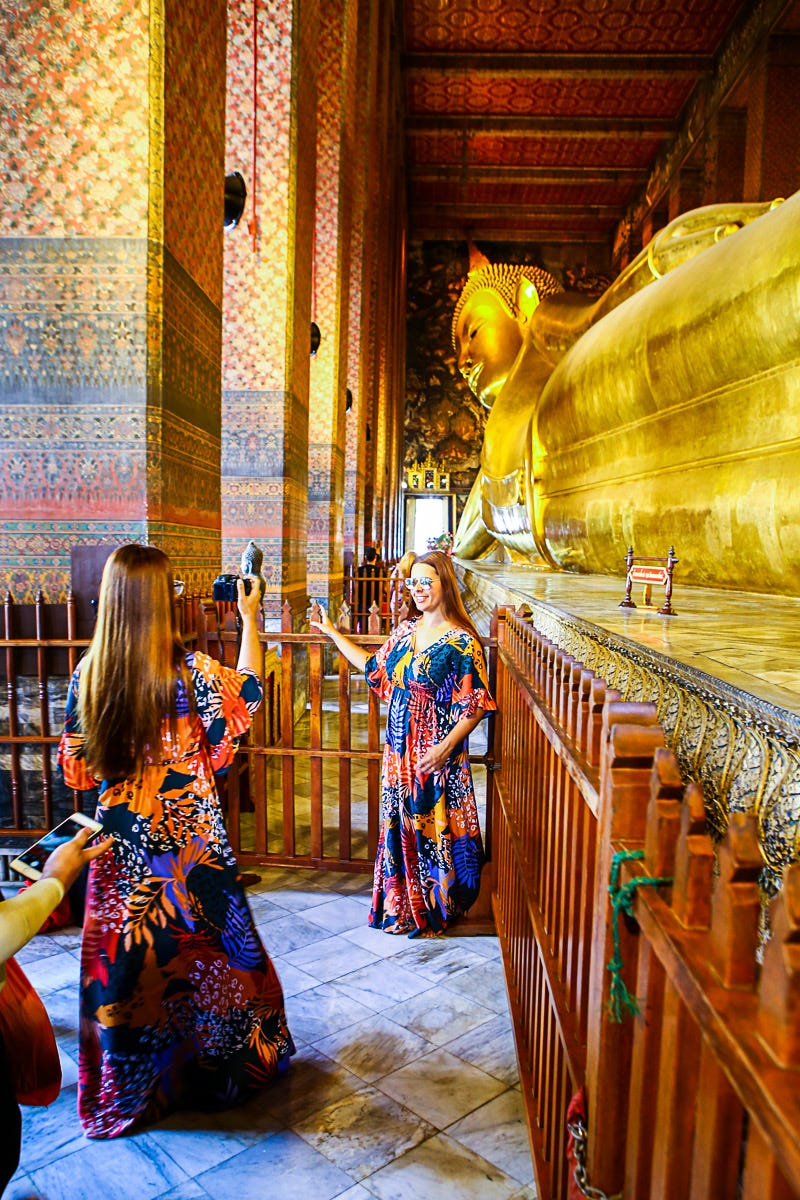Reflections on Bangkok
A non-sequitur heavily supplemented by photos
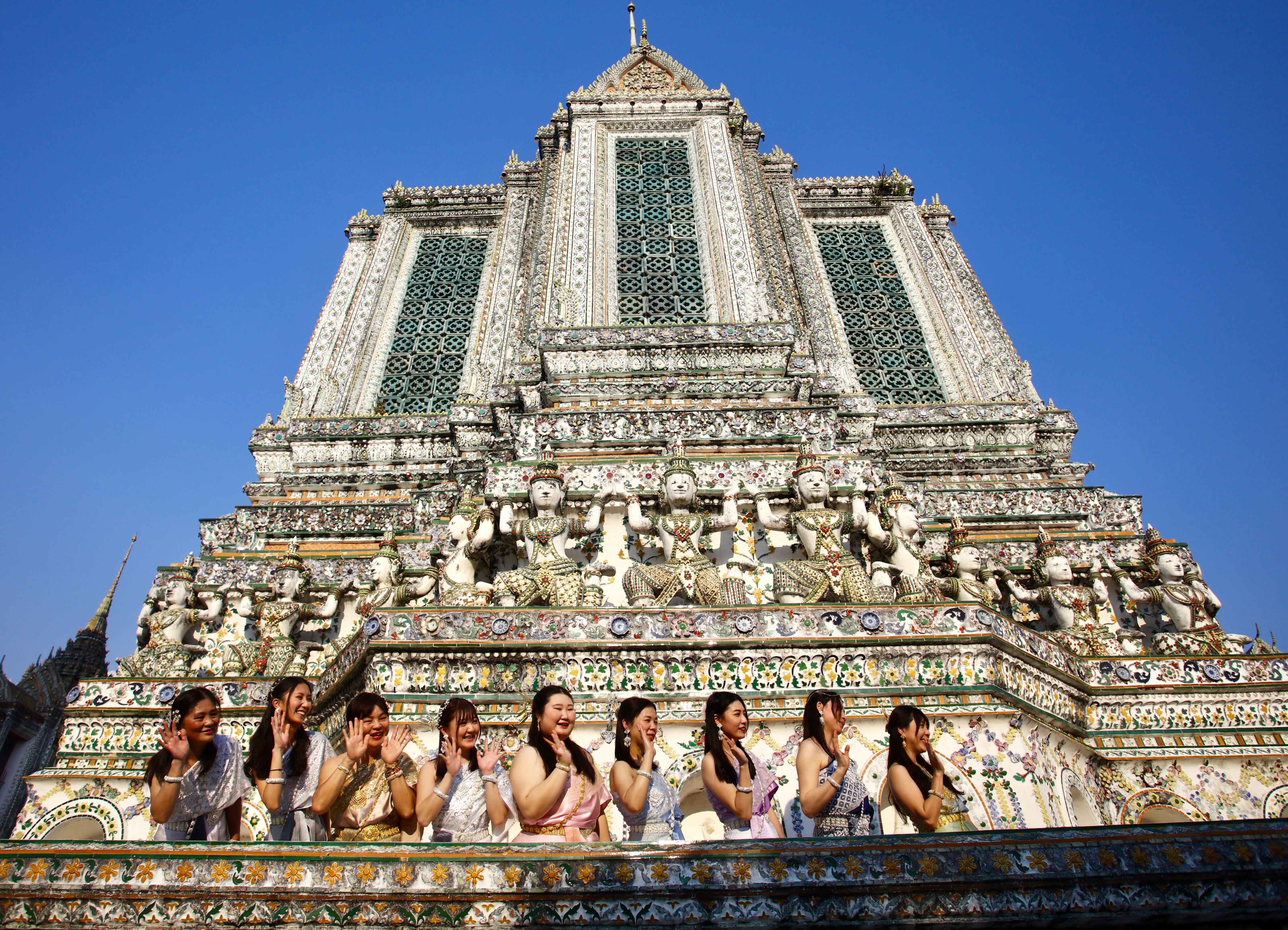
The smell is always the first thing I notice about Bangkok, and it’s the thing I love most about the city. It’s salty, fruity, herbaceous. It’s hot, wet pavement and lemongrass and standing water and dust, dust, dust. It smells warm because it always is warm here, but it’s the kind of trapped-heat smell that lives in the pavement and the roof tiles and the walls. Nearer the river there’s a liveliness to the air, an almost-lightness—the exhaling of the long strands of water lilies that float pointlessly up and down depending on the tide—sometimes interrupted by the two-stroke engine oil sputter of the longtail boats that crisscross the Chao Phraya. In the knotted alleys of the quieter neighbourhoods, the smell is cooking oils and damp laundry struggling to dry on plastic clotheslines. And always, everywhere, a hint of kefir lime.
The second thing is the light. Bangkok has its own special hues. In the morning the city wakes to the softest orange light and to long shadows being dragged behind yawning street dogs. But its sunsets are ferocious, bordering on violent, the city’s dense smog adding red menace to twilight. But when the sun goes all the way down, the place becomes a ludicrous neon-lit frontier town, the elevated roads and trains all underlit by the flashing lights of the tuk tuks, by thousands of red brake lights, and everyone’s faces cast in a pinky-reddish glare. And in some little open-front shops—my favourite places in Bangkok—where an old woman is selling a few bags of chips or a bottle of water, where the walls have turned black and oily from the exhaust of the passing cars, a single bare lightbulb hangs over her smiling face and she appears as though in a spotlight, or a halo.
There’s also the ubiquitous excellence of the food and the tremendous friendliness and the specific badness of the traffic. There are also a million things in between those poles that exist in every city anywhere in the world: scams and crime and boredom and all the rest. But the goal of this exceedingly short—by this blog’s standards—piece will be to highlight some of the subtler charms of one of the world’s great cities. Or just to casually remember some stuff that I like about a place without writing 10,000 words about it.
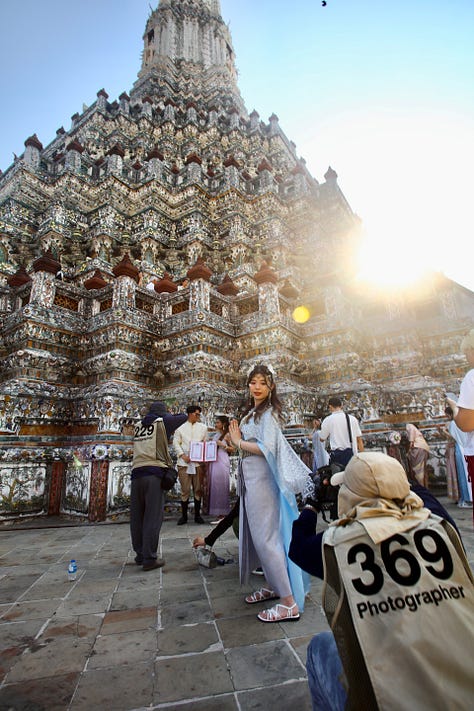
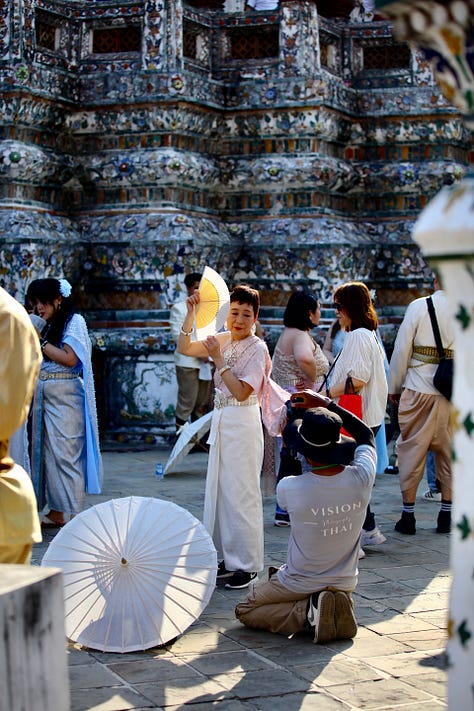
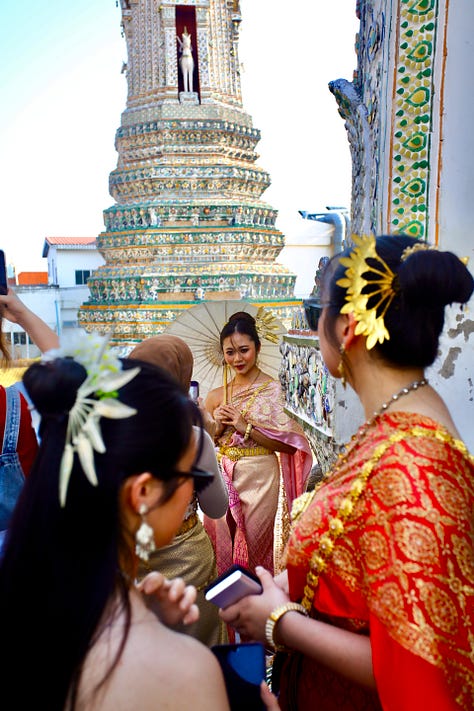
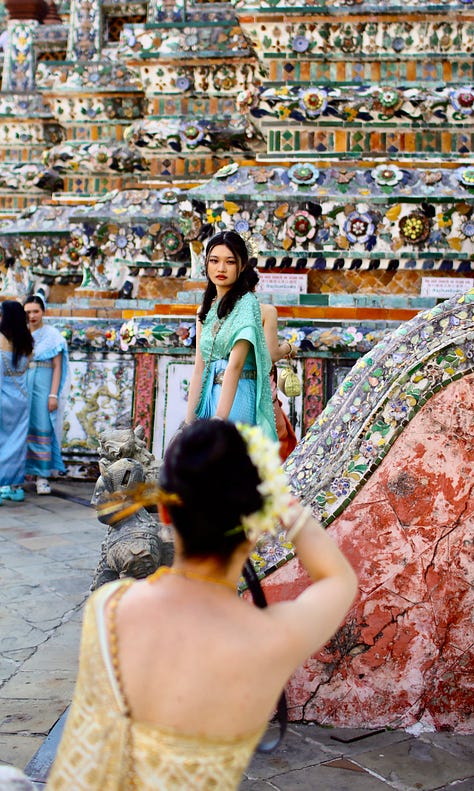
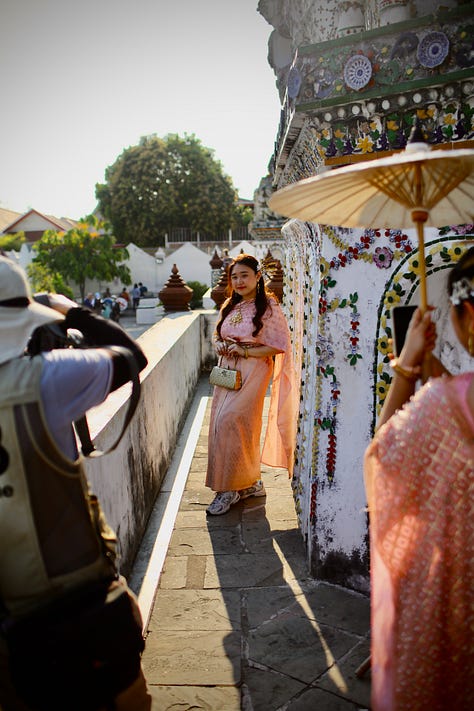
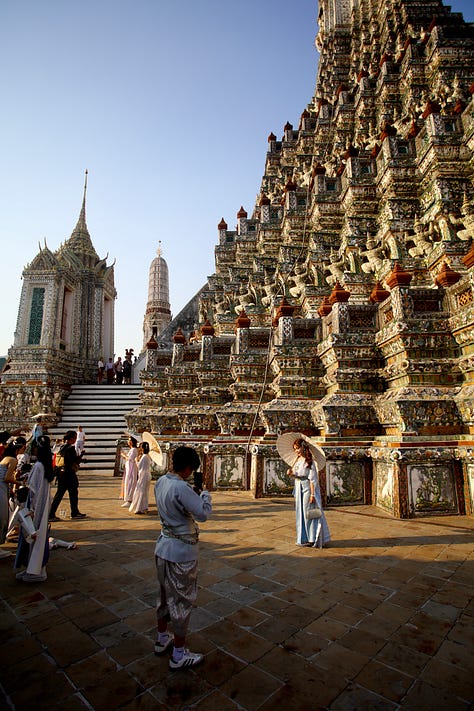
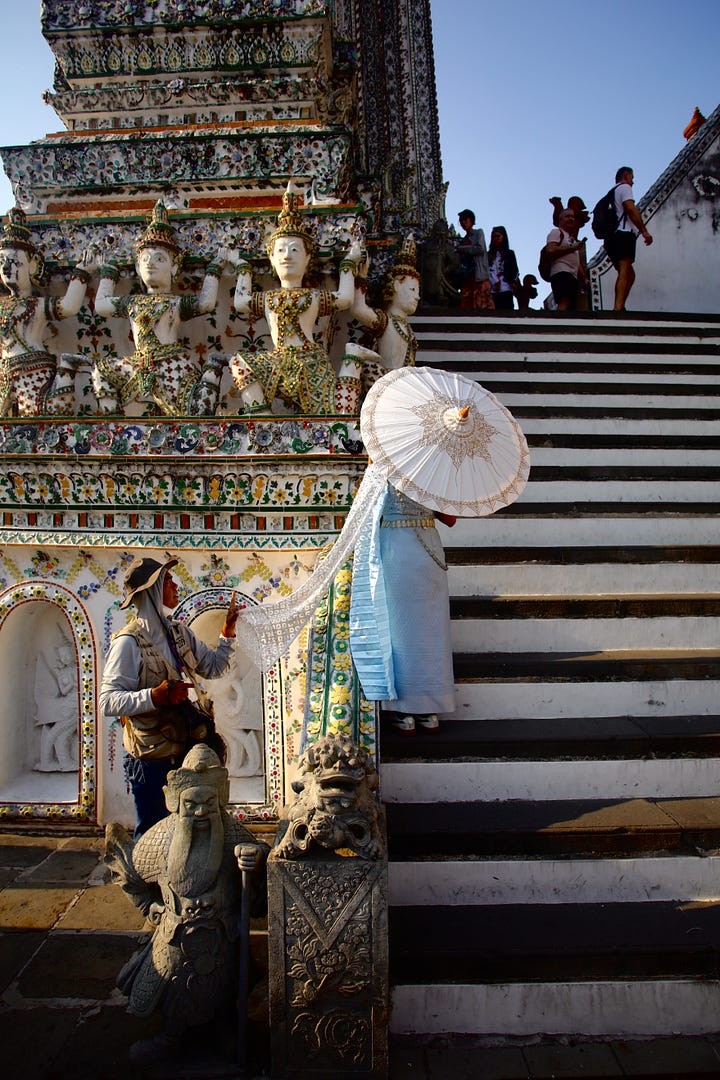
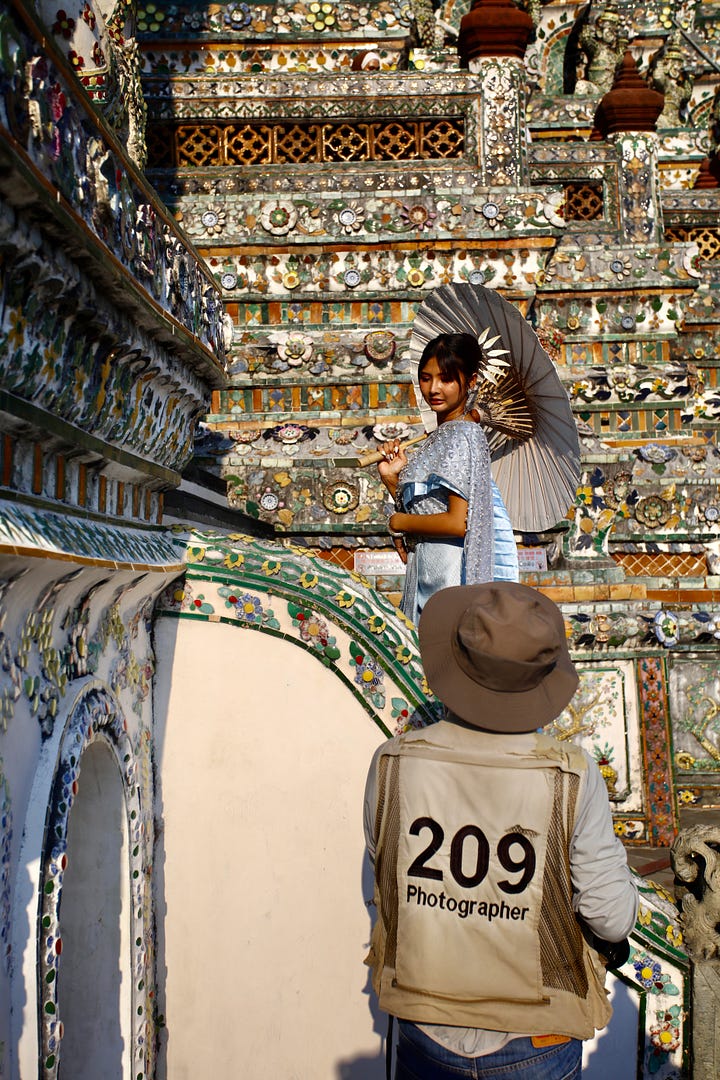
The first time I came to Bangkok was in 2007. I had a stack of cash after a year of working irregularly in South Korea as an English teacher. I haven’t written about this yet, but the first six months that I taught in Korea I did so under-the-table, the promise of a degree in the mail good enough for my then-boss. There’s not a lot interesting in the story of teaching children to say “May I go to the bathroom please?” except for the funny detail that due to illegality I was paid in cash every month. At the time, I made a whopping 2.1 million won. At the time, that was about $2,000 Canadian dollars. At the time, the largest denomination bill in Korea was the 10,000 won note, meaning I was paid in hundreds of bills each month. The whole point is that my finances were entirely tactile, and I entered the world of Southeast Asian travel with only hard cash; no credit cards were offered to me; hell, I struggled to get a bank card. In 2007, as an irregular, unbanked individual, hotels needed to be booked upon arrival, by showing up with (sweet, sweet wads of) cash in hand.
So I stayed on Khao San Road, like everyone else. In those days, you’d always be sure of finding a bed. Khao San was deserving of its reputation for filth and transience, but for the first-time visitor to Bangkok, it’s the easiest of places to land. Khao San Road was enduring a special period of awfulness around the time I first visited. It became known not so much as a place with a single flop house as a whole neighbourhood of repulsive flop. It’s the kind of place you wake up and wonder what went wrong, and the answer is never great.
A friend told me a story recently about his first trip to Bangkok. He stayed on Khao San Road, where he met a British man selling tickets to ping pong shows or Muay Thai fights or both. The man had gotten drunk and missed his flight back to England and had also run out of money, so this was his plan: he’d sell these tickets, making less than a dollar per head he lured onto a bus. I’m told he looked in very rough shape: injuries, a bad cough. It was as though he’d been struggling on the fringes of Thai society for years. He’d been there a few weeks. These are the kinds of people you meet on Khao San Road.
It’s cleaned up now, or at least it seems to have. It’s all hip hostels and nicer restaurants and a cute cooking school or two, and it’s close to all of the things you need to see the first time you go to Bangkok: Wat Pho and the Royal Palace, these gold-clad masterpieces of Siamese architecture. It’s near Chinatown and its wonderful night market. It’s close to the river and its ferries and malls and the spectacular Wat Arun temple, on the opposite bank of the river from Wat Pho.
Like most travellers, my knowledge of Bangkok began along Khao San Road and began to slowly flower outward. On subsequent trips I started staying in Sukhumvit, which has chain hotels with good value and some nice restaurants and party streets and strings of dodgy massage parlours beside non-dodgy massage parlors. Then I stayed even further from the center, in hipster Thong Lor with its Top 50 Bars in the World bars and little Japanese shops and dodgy alleys and non-dodgy alleys. To save a few bucks one trip I stayed in Rama 9. Don’t do this. On a recent trip I found Sathon—the embassy district—to be lovely and calm, and on my last trip a couple of weeks ago I stayed right along the river, where semi-luxury hotels have sprung up in recent years beside full-luxury hotels, but where the surrounding streets are still small and pleasant.
I’ve decided that all of these are good neighbourhoods. In most places in Bangkok, you can find that happy mixture of high- and low-end, fine restaurants and street stalls, cool bars and people drinking Chang from the 7-11. Some are more local feeling than others, have more labyrinthine alleyways and more blaring scooters, but Bangkok’s low-level charm is pervasive in all of them.
By design, Notes from the Edge of the Earth posts are usually long and rambly, whereas this one is deliberately short and accidentally rambly. I wrote a few thousands words—these little vignettes of what makes Bangkok Bangkok—but it all rang a little silly, a little hollow. It is a place that needs to be experienced, felt, smelled, seen. It is describable, but it is also stupendously photogenic.
When I began this project, it was an attempt to resuscitate an old travel blog by the same name that focussed as much on photography as on long-form writing. In the future, there will be more posts like this, light on words and heavy on images. There will be stories about trips where the photos are long, long lost, like the next Faulty Memory Series (India), which will come out next month. For now, let’s recall that a picture is worth a thousand words and content ourselves with this 20,000-word essay.
